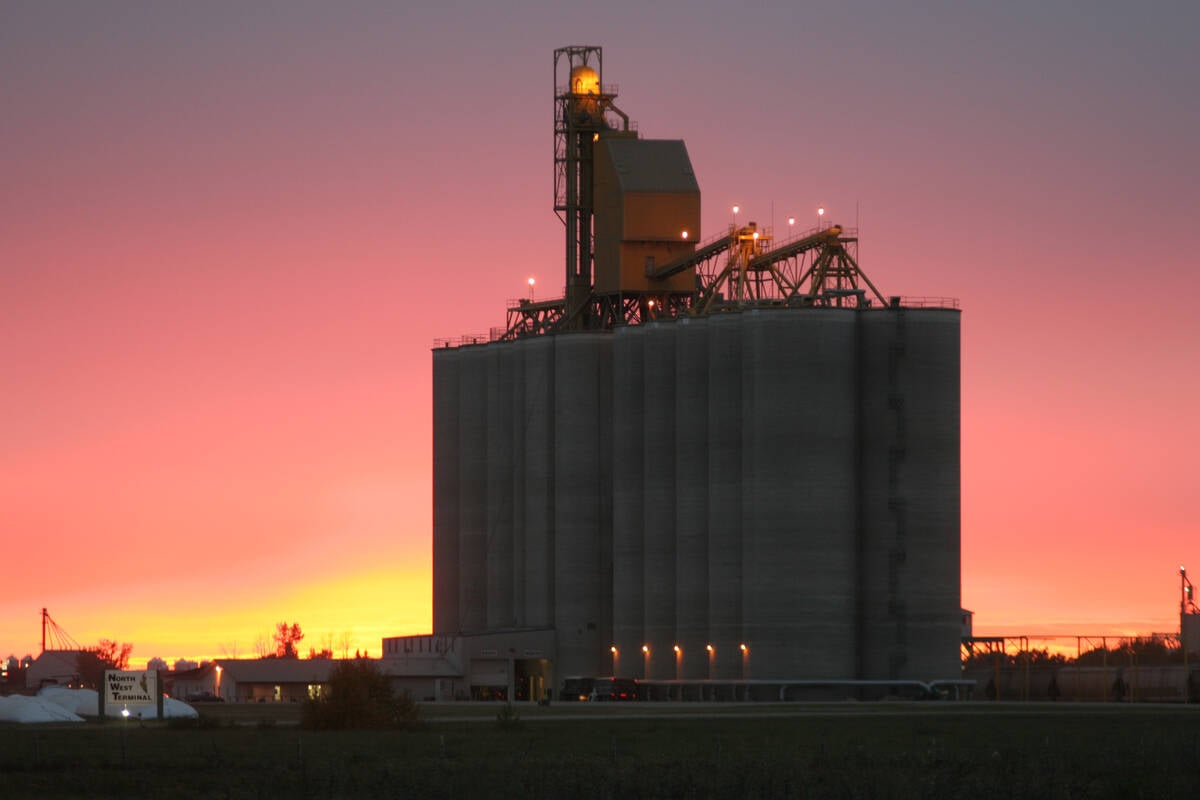TOMPKINS, Sask. – The white Maremma dogs herd the visitor’s car out of the snow-covered farmyard and then give chase down the grid road.
At a neighbour’s farm, another Maremma raised with sheep from birth must be rescued from a line of ewes being loaded onto a truck en route to feeder barns.
Their guarding and herding roles are clear and integral to Ken and Elaine Paré’s eight-quarter, 1,000-head sheep ranch near this southwestern Saskatchewan town.
Every June for the last nine years, about 17 Maremmas and Border collies have boarded these large trucks with 1,600 sheep and lambs bound for summer grazing duties in Saskatchewan’s seedling forests.
Read Also

Bunge to acquire North West Terminal Ltd.
Bunge plans to buy the assets of North West Terminal in Unity, Sask.
Elaine said the summer move saves their grass in the often dry rolling hills back home, while helping with reforestation efforts in Saskatchewan’s north around Carrot River and Cumberland House.
The sheep adapt readily to a change in diet and can eat weeds, like leafy spurge, which compete with tree seedlings. Meanwhile, the dogs keep them safe from predators like bears and wolves.
“The project is impossible without them,” said Elaine of their dogs’ role in their annual working holiday.
Elaine has been joined by her three children and four grandchildren in the past. They use a mobile home as a camp base and often sleep under the stars with the flock, sometimes in extremes of temperature, weather conditions and insects.
She and Ken spent one season tagging along on a similar project in British Columbia to learn the ropes before securing the annual grazing contract in Saskatchewan the following year.
“The paycheque is nice. I just wish it was bigger,” said Ken. Last summer, they received $80 for each of the 690 acres grazed. Elaine said the same weeding performed by a human labour force would cost about $280 an acre.
Their $80 produces a profit while also covering the costs for transporting the animals and for buying portable pens and the trailer. A trained collie can cost up to $2,000, they noted. ATVs are used to bring supplies into camp, which can be as far as 30 kilometres from the nearest road.
Disease control is essential, and herd health must be maintained to prevent contamination with wildlife, said Elaine.
Losses are minimal, with about 10 sheep dying each summer. That’s fewer than in their home pastures and largely due to their ability to treat problems more readily since they are living in close quarters with the flock.
In addition to predators, dangers include abandoned open wells and swamplands.
The entire family pitches in at home and at camp to manage the sheep, grow feed and maintain pastures.
Ken’s strengths lie in organizing, making farm repairs and growing feed, while Elaine cited her physical strength and herding abilities. Her son, Tony Mignault, 39, helps out with meals, and makes soft or wet areas passable by building bridges or roads.
Son Buffy Mignault, 34, works in the oil patch but spends his winters helping on the ranch.
Help from family and the summer grazing contracts keep the Tompkins ranch viable, the Parés say.
“If not for the forestry contract, it would be pretty tough,” said Elaine.
The lack of a slaughter plant for sheep in Saskatchewan hinders the industry, she said.
Recent droughts have also resulted in larger than normal numbers of animals culled, causing prices to plummet.
Ken said they need a minimum of $100 an animal, with prices fluctuating from lows of 60 and 70 cents a pound in the past to $1.25 this day.
“To break even, we need $1 a lb. at least,” said Ken.
Elaine and her daughter, Annette Bowyer, board members with Prairie Lamb, are actively pursuing new markets for lamb in ready-to-eat gourmet products like Moroccan stew,
kebabs and meatball appetizers.
Annette is comfortable in the refurbished Eaton home near the Paré ranch that she shares with husband Wade and four children ages eight through 18. But she doubts she would choose farming today.
“If my dad were alive and said ‘here’s the family farm,’ I’d say ‘keep it,’ ” Annette said.
The Bowyers’ sheep and ranch are paid for, helped by off-farm jobs in the community where she grew up. Like Ken and Elaine, Annette and Wade raise cattle and sheep.
“It’s a lifestyle choice. I stay for the kids,” said Annette.
The Paré family’s roots run deep in this community, where her grandfather still runs a ranch nearby. Annette supports community activities and has been in turn supported by family and friends through the sudden deaths of two husbands.
A former teacher’s aide, and now manager of the largest community sheep pasture in Canada near Tompkins, she has seen her community decline. She cited the local school enrolment dropping to under 60 in recent years from 250 in 1984.
The Parés also enjoy the rural lifestyle, particularly sheep herding. Elaine and Ken, a former sheep shearer from Eastend, Sask., both had their own herds before they married in 1989.
Annette, 37, and Elaine, topping 50, look younger than their ages, citing hard physical work and the sheep as the reasons.
“They’re very calming and you can work with them anywhere,” said Annette.
Outdoor living is also a good fit with the Parés, who look forward to lambing, springtime and their summer campout each year.
“It’s a good life,” said Ken.














